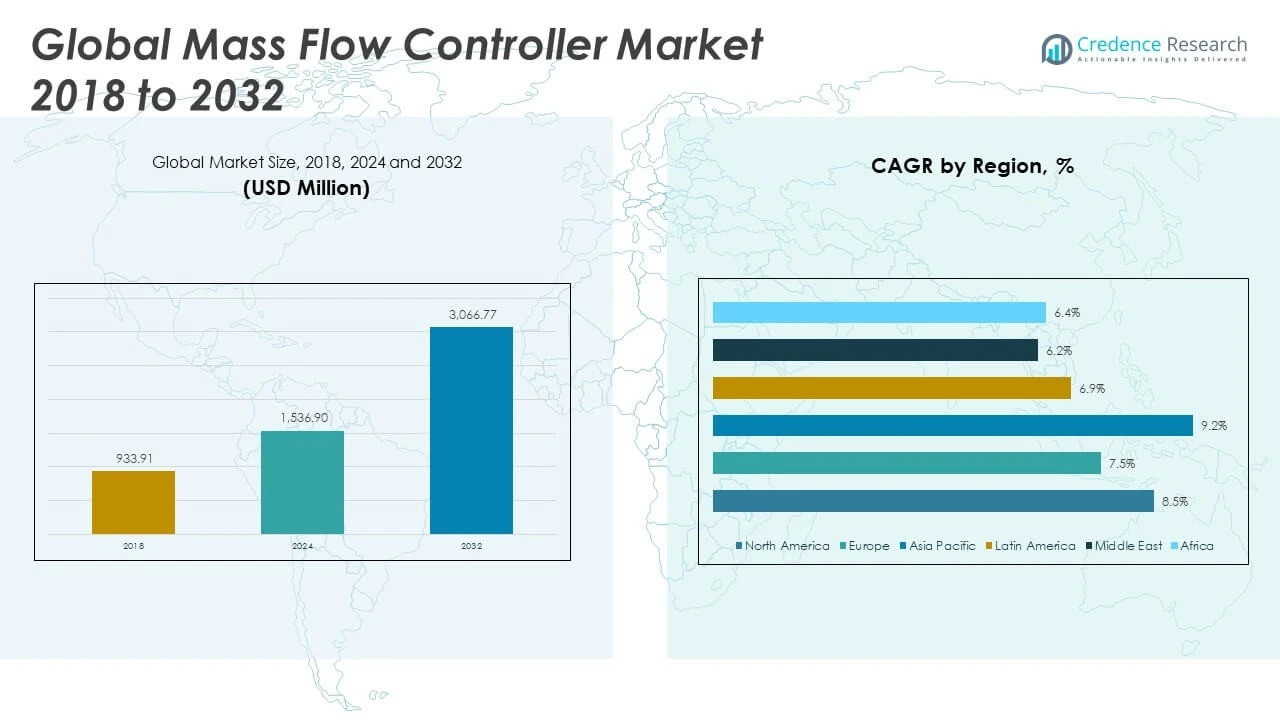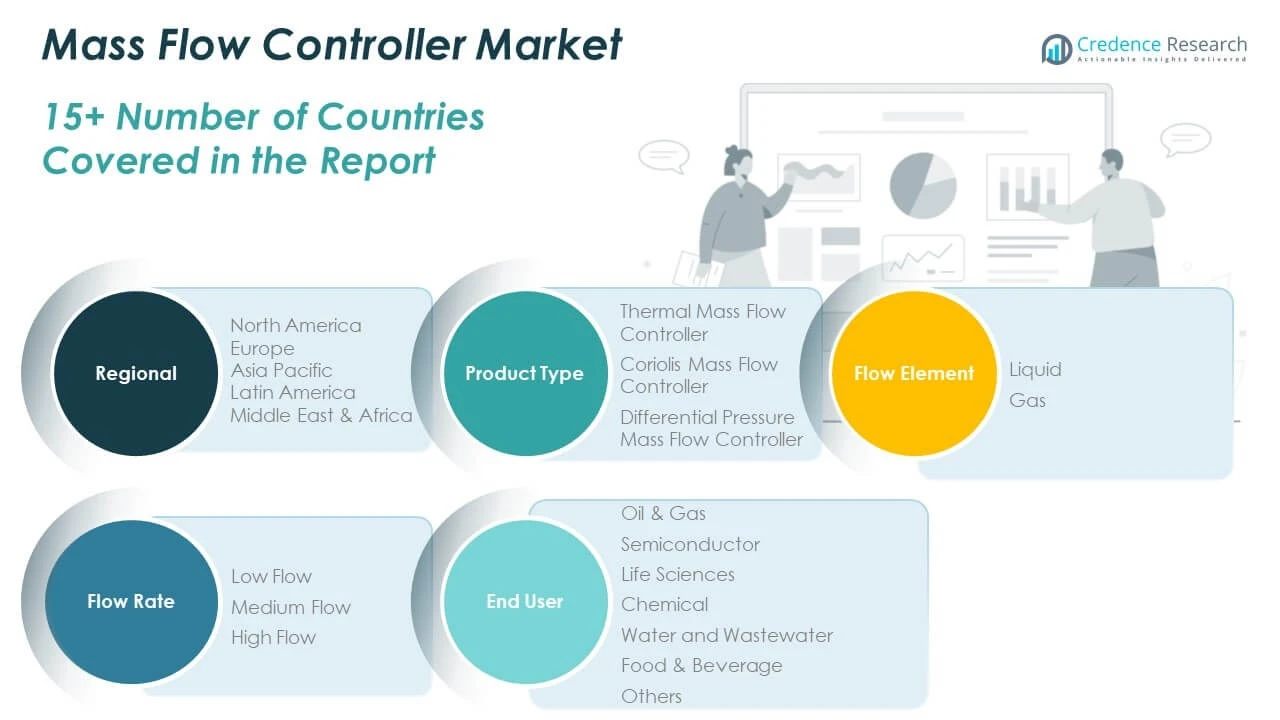CHAPTER NO. 1: GENESIS OF THE MARKET
1.1 Market Prelude – Introduction & Scope
1.2 The Big Picture – Objectives & Vision
1.3 Strategic Edge – Unique Value Proposition
1.4 Stakeholder Compass – Key Beneficiaries
CHAPTER NO. 2: EXECUTIVE LENS
2.1 Pulse of the Industry – Market Snapshot
2.2 Growth Arc – Revenue Projections (USD Million)
2.3. Premium Insights – Based on Primary Interviews
CHAPTER NO. 3: MASS FLOW CONTROLLER MARKET FORCES & INDUSTRY PULSE
3.1 Foundations of Change – Market Overview
3.2 Catalysts of Expansion – Key Market Drivers
3.2.1 Momentum Boosters – Growth Triggers
3.2.2 Innovation Fuel – Disruptive Technologies
3.3 Headwinds & Crosswinds – Market Restraints
3.3.1 Regulatory Tides – Compliance Challenges
3.3.2 Economic Frictions – Inflationary Pressures
3.4 Untapped Horizons – Growth Potential & Opportunities
3.5 Strategic Navigation – Industry Frameworks
3.5.1 Market Equilibrium – Porter’s Five Forces
3.5.2 Ecosystem Dynamics – Value Chain Analysis
3.5.3 Macro Forces – PESTEL Breakdown
3.6 Price Trend Analysis
3.6.1 Regional Price Trend
3.6.2 Price Trend by product
CHAPTER NO. 4: KEY INVESTMENT EPICENTER
4.1 Regional Goldmines – High-Growth Geographies
4.2 Product Frontiers – Lucrative Product Categories
4.3 Flow Element Sweet Spots – Emerging Demand Segments
CHAPTER NO. 5: REVENUE TRAJECTORY & WEALTH MAPPING
5.1 Momentum Metrics – Forecast & Growth Curves
5.2 Regional Revenue Footprint – Market Share Insights
5.3 Segmental Wealth Flow – Product Type & Flow Element Revenue
CHAPTER NO. 6: TRADE & COMMERCE ANALYSIS
6.1.Import Analysis by Region
6.1.1. Global Mass Flow Controller Market Import Volume By Region
6.2.Export Analysis by Region
6.2.1. Global Mass Flow Controller Market Export Volume By Region
CHAPTER NO. 7: COMPETITION ANALYSIS
7.1.Company Market Share Analysis
7.1.1. Global Mass Flow Controller Market: Company Market Share
7.1. Global Mass Flow Controller Market Company Volume Market Share
7.2. Global Mass Flow Controller Market Company Revenue Market Share
7.3.Strategic Developments
7.3.1.Acquisitions & Mergers
7.3.2. New Product Launch
7.3.3. Regional Expansion
7.4. Competitive Dashboard
7.5. Company Assessment Metrics, 2024
CHAPTER NO. 8: MASS FLOW CONTROLLER MARKET – BY PRODUCT TYPE SEGMENT ANALYSIS
8.1.Mass Flow Controller Market Overview by Product Type Segment
8.1.1. Mass Flow Controller Market Volume Share By Product Type
8.1.2. Mass Flow Controller Market Revenue Share By Product Type
8.2. Thermal Mass Flow Controller
8.3. Coriolis Mass Flow Controller
8.4. Differential Pressure Mass Flow Controller
CHAPTER NO. 9: MASS FLOW CONTROLLER MARKET – BY FLOW ELEMENT SEGMENT ANALYSIS
9.1.Mass Flow Controller Market Overview by Flow Element Segment
9.1.1. Mass Flow Controller Market Volume Share By Flow Element
9.1.2. Mass Flow Controller Market Revenue Share By Flow Element
9.2. Liquid
9.3. Gas
CHAPTER NO. 10: MASS FLOW CONTROLLER MARKET – BY FLOW RATE SEGMENT ANALYSIS
10.1.Mass Flow Controller Market Overview by Flow Rate Segment
10.1.1. Mass Flow Controller Market Volume Share By Flow Rate
10.1.2. Mass Flow Controller Market Revenue Share By Flow Rate
10.2. Low Flow
10.3. Medium Flow
10.4. High Flow
CHAPTER NO. 11: MASS FLOW CONTROLLER MARKET – BY END USER SEGMENT ANALYSIS
11.1.Mass Flow Controller Market Overview by End User Segment
11.1.1. Mass Flow Controller Market Volume Share By End User
11.1.2. Mass Flow Controller Market Revenue Share By End User
11.2. Oil & Gas
11.3. Semiconductor
11.4. Life Sciences
11.5. Chemical
11.6. Water and Wastewater
11.7. Food & Beverage
11.8. Others
CHAPTER NO. 12: MASS FLOW CONTROLLER MARKET – REGIONAL ANALYSIS
12.1.Mass Flow Controller Market Overview by Region Segment
12.1.1. Global Mass Flow Controller Market Volume Share By Region
12.1.2. Global Mass Flow Controller Market Revenue Share By Region
12.1.3.Regions
12.1.4.Global Mass Flow Controller Market Volume By Region
12.1.5.Global Mass Flow Controller Market Revenue By Region
12.1.6.Product Type
12.1.7.Global Mass Flow Controller Market Volume By Product Type
12.1.8.Global Mass Flow Controller Market Revenue By Product Type
12.1.9.Flow Element
12.1.10. Global Mass Flow Controller Market Volume By Flow Element
12.1.11. Global Mass Flow Controller Market Revenue By Flow Element
12.1.12. Flow Rate
12.1.13. Global Mass Flow Controller Market Volume By Flow Rate
12.1.14. Global Mass Flow Controller Market Revenue By Flow Rate
12.1.12. End User
12.1.13. Global Mass Flow Controller Market Volume By End User
12.1.14. Global Mass Flow Controller Market Revenue By End User
CHAPTER NO. 13: NORTH AMERICA MASS FLOW CONTROLLER MARKET – COUNTRY ANALYSIS
13.1.North America Mass Flow Controller Market Overview by Country Segment
13.1.1.North America Mass Flow Controller Market Volume Share By Region
13.1.2. North America Mass Flow Controller Market Revenue Share By Region
13.2.North America
13.2.1.North America Mass Flow Controller Market Volume By Country
13.2.2.North America Mass Flow Controller Market Revenue By Country
13.2.3.Product Type
13.2.4.North America Mass Flow Controller Market Volume By Product Type
13.2.5.North America Mass Flow Controller Market Revenue By Product Type
13.2.6.Flow Element
13.2.7.North America Mass Flow Controller Market Volume By Flow Element
13.2.8. North America Mass Flow Controller Market Revenue By Flow Element
13.2.9.Flow Rate
13.2.10. North America Mass Flow Controller Market Volume By Flow Rate
13.2.11. North America Mass Flow Controller Market Revenue By Flow Rate
13.2.12. End User
13.2.13. North America Mass Flow Controller Market Volume By End User
13.2.14. North America Mass Flow Controller Market Revenue By End User
13.3.U.S.
13.4.Canada
13.5.Mexico
CHAPTER NO. 14: EUROPE MASS FLOW CONTROLLER MARKET – COUNTRY ANALYSIS
14.1. Europe Mass Flow Controller Market Overview by Country Segment
14.1.1. Europe Mass Flow Controller Market Volume Share By Region
14.1.2. Europe Mass Flow Controller Market Revenue Share By Region
14.2.Europe
14.2.1.Europe Mass Flow Controller Market Volume By Country
14.2.2.Europe Mass Flow Controller Market Revenue By Country
14.2.3.Product Type
14.2.4.Europe Mass Flow Controller Market Volume By Product Type
14.2.5.Europe Mass Flow Controller Market Revenue By Product Type
14.2.6.Flow Element
14.2.7. Europe Mass Flow Controller Market Volume By Flow Element
14.2.8. Europe Mass Flow Controller Market Revenue By Flow Element
14.2.9.Flow Rate
14.2.10. Europe Mass Flow Controller Market Volume By Flow Rate
14.2.11. Europe Mass Flow Controller Market Revenue By Flow Rate
14.2.12. End User
14.2.13. Europe Mass Flow Controller Market Volume By End User
14.2.14. Europe Mass Flow Controller Market Revenue By End User
14.3.UK
14.4.France
14.5.Germany
14.6.Italy
14.7.Spain
14.8.Russia
14.9. Rest of Europe
CHAPTER NO. 15: ASIA PACIFIC MASS FLOW CONTROLLER MARKET – COUNTRY ANALYSIS
15.1.Asia Pacific Mass Flow Controller Market Overview by Country Segment
15.1.1.Asia Pacific Mass Flow Controller Market Volume Share By Region
15.1.2.Asia Pacific Mass Flow Controller Market Revenue Share By Region
15.2.Asia Pacific
15.2.1. Asia Pacific Mass Flow Controller Market Volume By Country
15.2.2.Asia Pacific Mass Flow Controller Market Revenue By Country
15.2.3.Product Type
15.2.4.Asia Pacific Mass Flow Controller Market Volume By Product Type
15.2.5.Asia Pacific Mass Flow Controller Market Revenue By Product Type
15.2.6.Flow Element
15.2.7.Asia Pacific Mass Flow Controller Market Volume By Flow Element
15.2.8.Asia Pacific Mass Flow Controller Market Revenue By Flow Element
15.2.9.Flow Rate
15.2.10. Asia Pacific Mass Flow Controller Market Volume By Flow Rate
15.2.11. Asia Pacific Mass Flow Controller Market Revenue By Flow Rate
15.2.12. End User
15.2.13. Asia Pacific Mass Flow Controller Market Volume By End User
15.2.14. Asia Pacific Mass Flow Controller Market Revenue By End User
15.3.China
15.4.Japan
15.5.South Korea
15.6.India
15.7.Australia
15.8.Southeast Asia
15.9. Rest of Asia Pacific
CHAPTER NO. 16: LATIN AMERICA MASS FLOW CONTROLLER MARKET – COUNTRY ANALYSIS
16.1.Latin America Mass Flow Controller Market Overview by Country Segment
16.1.1.Latin America Mass Flow Controller Market Volume Share By Region
16.1.2.Latin America Mass Flow Controller Market Revenue Share By Region
16.2. Latin America
16.2.1. Latin America Mass Flow Controller Market Volume By Country
16.2.2.Latin America Mass Flow Controller Market Revenue By Country
16.2.3.Product Type
16.2.4. Latin America Mass Flow Controller Market Volume By Product Type
16.2.5. Latin America Mass Flow Controller Market Revenue By Product Type
16.2.6.Flow Element
16.2.7.Latin America Mass Flow Controller Market Volume By Flow Element
16.2.8.Latin America Mass Flow Controller Market Revenue By Flow Element
16.2.9.Flow Rate
16.2.10. Latin America Mass Flow Controller Market Volume By Flow Rate
16.2.11. Latin America Mass Flow Controller Market Revenue By Flow Rate
16.2.12. End User
16.2.13. Latin America Mass Flow Controller Market Volume By End User
16.2.14. Latin America Mass Flow Controller Market Revenue By End User
16.3.Brazil
16.4.Argentina
16.5.Rest of Latin America
CHAPTER NO. 17: MIDDLE EAST MASS FLOW CONTROLLER MARKET – COUNTRY ANALYSIS
17.1.Middle East Mass Flow Controller Market Overview by Country Segment
17.1.1.Middle East Mass Flow Controller Market Volume Share By Region
17.1.2. Middle East Mass Flow Controller Market Revenue Share By Region
17.2.Middle East
17.2.1. Middle East Mass Flow Controller Market Volume By Country
17.2.2.Middle East Mass Flow Controller Market Revenue By Country
17.2.3.Product Type
17.2.4.Middle East Mass Flow Controller Market Volume By Product Type
17.2.5.Middle East Mass Flow Controller Market Revenue By Product Type
17.2.6.Flow Element
17.2.7.Middle East Mass Flow Controller Market Volume By Flow Element
17.2.8.Middle East Mass Flow Controller Market Revenue By Flow Element
17.2.9. Flow Rate
17.2.10. Middle East Mass Flow Controller Market Volume By Flow Rate
17.2.11. Middle East Mass Flow Controller Market Revenue By Flow Rate
17.2.12. End User
17.2.13. Middle East Mass Flow Controller Market Volume By End User
17.2.14. Middle East Mass Flow Controller Market Revenue By End User
17.3.GCC Countries
17.4. Israel
17.5. Turkey
17.6.Rest of Middle East
CHAPTER NO. 18: AFRICA MASS FLOW CONTROLLER MARKET – COUNTRY ANALYSIS
18.1. Africa Mass Flow Controller Market Overview by Country Segment
18.1.1.Africa Mass Flow Controller Market Volume Share By Region
18.1.2. Africa Mass Flow Controller Market Revenue Share By Region
18.2. Africa
18.2.1.Africa Mass Flow Controller Market Volume By Country
18.2.2.Africa Mass Flow Controller Market Revenue By Country
18.2.3.Product Type
18.2.4.Africa Mass Flow Controller Market Volume By Product Type
18.2.5.Africa Mass Flow Controller Market Revenue By Product Type
18.2.6.Flow Element
18.2.7. Africa Mass Flow Controller Market Volume By Flow Element
18.2.8. Africa Mass Flow Controller Market Revenue By Flow Element
18.2.9.Flow Rate
18.2.10. Africa Mass Flow Controller Market Volume By Flow Rate
18.2.11. Africa Mass Flow Controller Market Revenue By Flow Rate
18.2.12. End User
18.2.13. Africa Mass Flow Controller Market Volume By End User
18.2.14. Africa Mass Flow Controller Market Revenue By End User
18.3. South Africa
18.4.Egypt
18.5.Rest of Africa
CHAPTER NO. 19: COMPANY PROFILES
19.1. Brooks Instrument
19.1.1.Company Overview
19.1.2.Product Portfolio
19.1.3.Financial Overview
19.1.4.Recent Developments
19.1.5.Growth Strategy
19.1.6.SWOT Analysis
19.2. MKS Instruments
19.3. Bronkhorst High-Tech B.V.
19.4. Sierra Instruments
19.5. Alicat Scientific
19.6. Teledyne Hastings Instruments
19.7. HORIBA STEC
19.8. Sensirion AG
19.9. Aalborg Instruments & Controls, Inc.
19.10. Tokyo Keiso Co., Ltd.
19.11. Thermal Instrument Company
19.12. Omega Engineering
19.13. Teledyne Tekmar
19.14. Sensyflow









